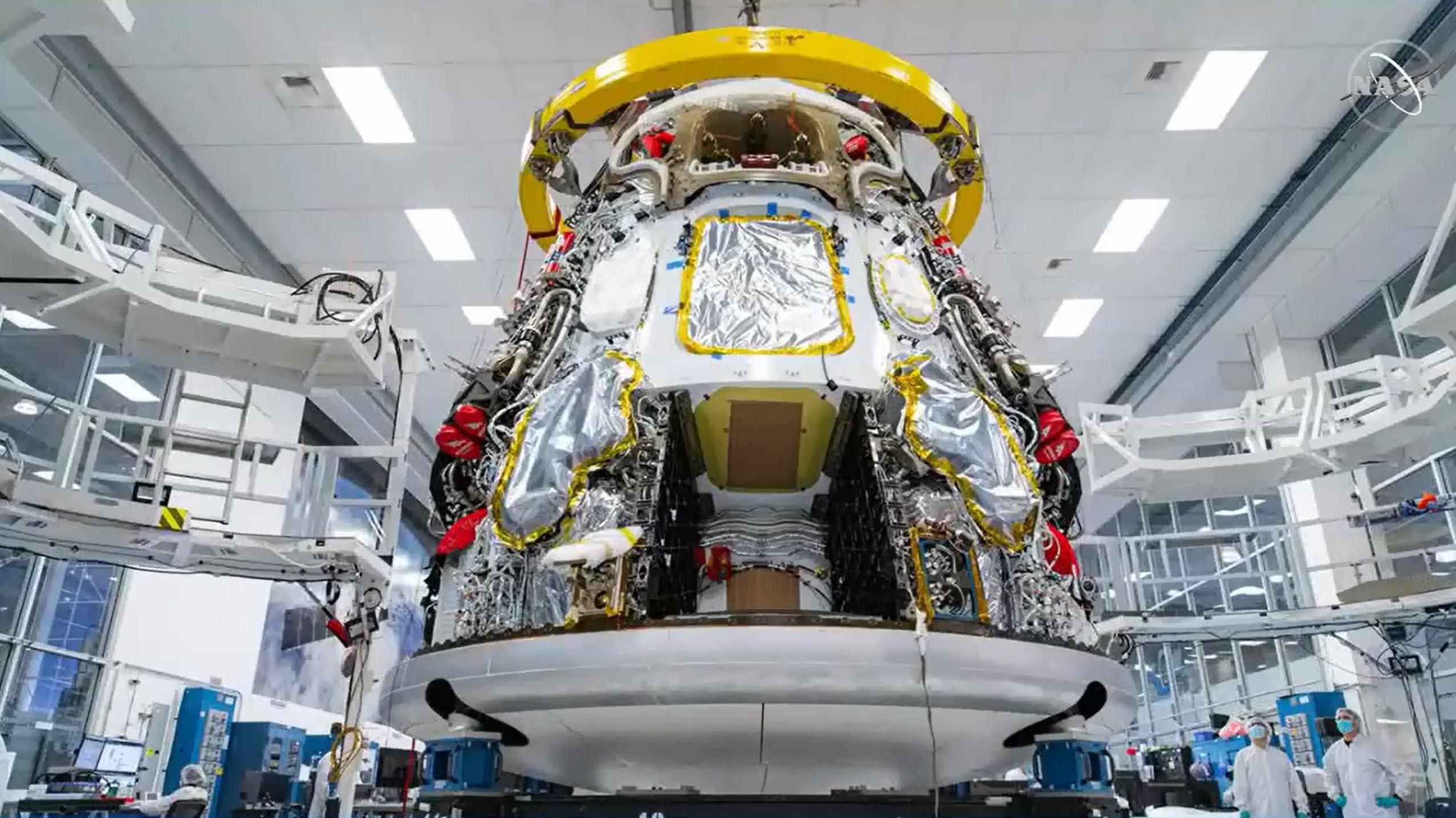
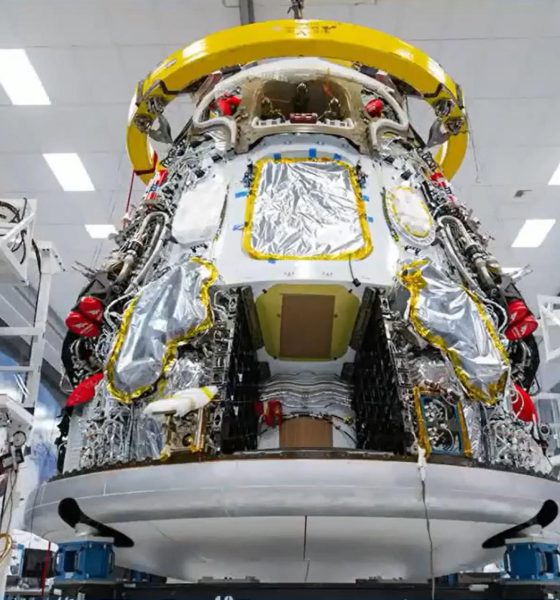
News
SpaceX Crew Dragon capsule arrives in Florida for next NASA astronaut launch
The SpaceX Crew Dragon capsule destined to complete the company’s first operational mission to the International Space Station (ISS) – designated Crew-1 – has been delivered to SpaceX processing facilities in Florida. As previously reported by Teslarati, the C207 capsule was in the final stages of wrapping up integration at the SpaceX factory in Hawthorne, CA in early August. Over the weekend, capsule C207 completed the trek from California to Florida and arrived at SpaceX facilities at Cape Canaveral Air Force Station on Tuesday, August 18 according to a NASA Commerical Crew blog post.
Ahead of shipment from California, capsule C207 was outfitted with a trunk section featuring upgraded solar panels intended to extend Crew Dragon’s previous limitation of ~120 days in orbit. The upgraded solar panels should extend the limitation and mitigate the amount of solar cell degredation that occurs while in orbit allowing the Crew Dragon – and astronauts – to remain in orbit for as long as six months meeting NASA’s long-duration mission requirements.
The capsule was also equipped with all necessary hardware including the re-entry heat shield, Super Draco emergency ascent abort thruster system, and parachute landing mechanisms prior to shipping out to Florida. The capsule will undergo final check outs and testing – such as acoustic testing – while at SpaceX’s Florida processing facilities prior to being mated with its Falcon 9 booster in SpaceX’s Horizontal Integration Facility at Kennedy Space Center’s Launch Complex 39-A.
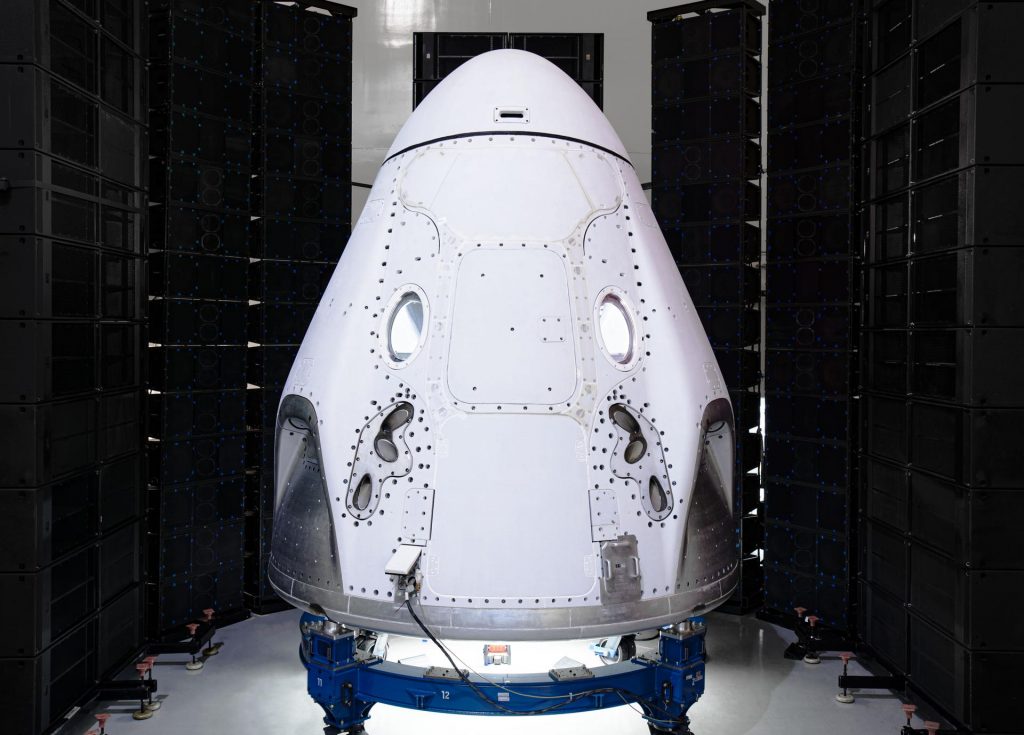
The arrival of the astronaut capsule follows the delivery of a brand new Falcon 9 booster. The booster (B1061) made the trek from SpaceX testing grounds in McGregor, Texas back in July before arriving at Cape Canaveral Air Force Station. Before shipment the booster successfully passed a static fire acceptance test of its nine Merlin 1D engines on a test stand at the Mcgregor facility.
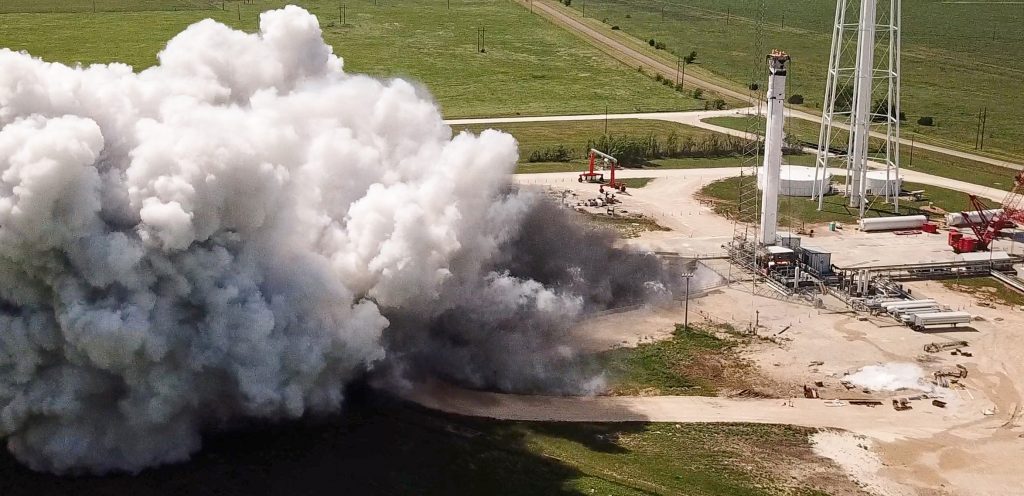
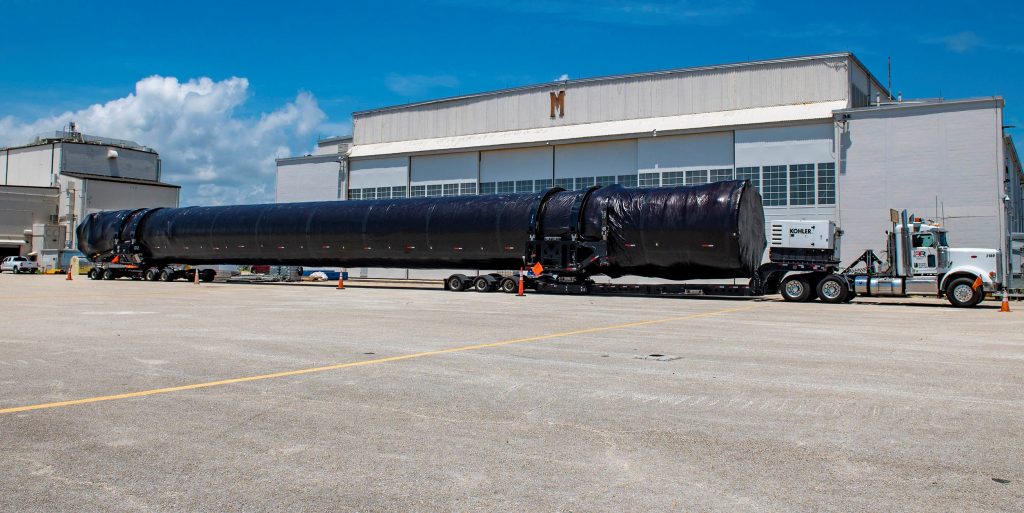
In the blog post, NASA also stated that the Falcon 9’s second stage outfitted with a single Merlin Vacuum engine also passed acceptance test firing at the McGregor facility on Tuesday August, 18. The MVac engine of the second stage was previously succesfuly static fired back in April as confirmed on the company’s Twitter account. The recently test fired completed second stage is expected to ship to Florida in the coming weeks. The arrival of the second stage will mark the delivery of all SpaceX Crew-1 flight hardware.
The Crew-1 Crew Dragon capsule will fly three NASA astronauts, commander Michael Hopkins, pilot Victor Glover, and mission specialist Shannon Walker, as well as mission specialist Soichi Noguchi of Japan’s space program JAXA (Japan Aerospace Exploration Agency to the ISS and safely return them home for a splashdown landing.
NASA and SpaceX are currently targeting no earlier than October 23rd for the launch of Crew-1. As previously reported by Teslarati, the late October launch date is a slip of a few weeks from the previously identified no earlier than late-September timeline. The extra time is likely a result of neccessary testing and time needed for NASA to complete the operational status certification of SpaceX’s human spaceflight system.
Check out Teslarati’s newsletters for prompt updates, on-the-ground perspectives, and unique glimpses of SpaceX’s rocket launch and recovery processes.

News
Tesla is making a change to its exterior cameras with a potential upgrade
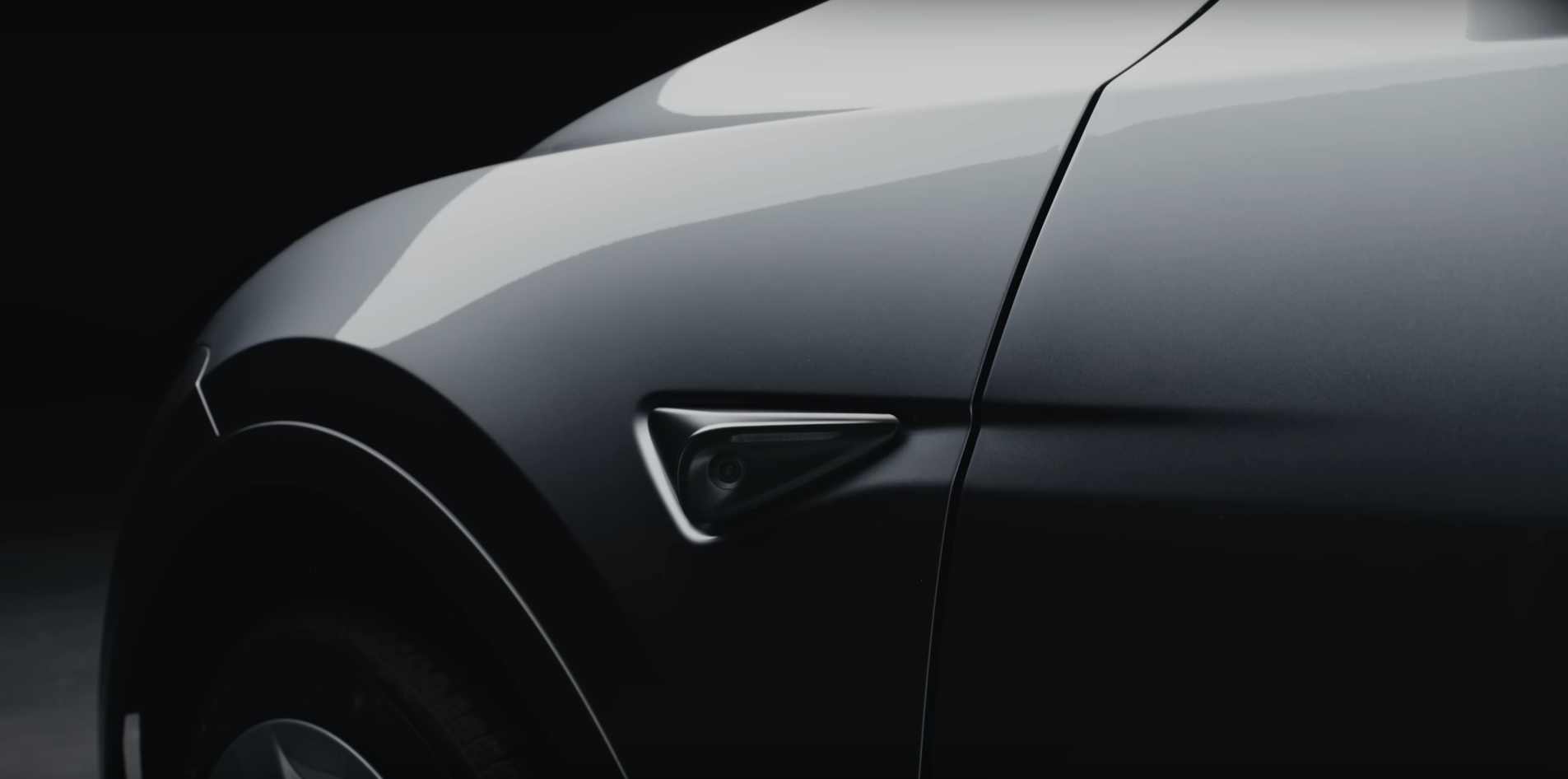
Tesla appears to be making a change to its exterior side repeater cameras, which are used for the company’s Full Self-Driving suite, and other features, like Sentry Mode.
The change appears to be a potential upgrade in preparation for the AI5 suite, which CEO Elon Musk said will be present on a handful of vehicles next year, but will not be widely implemented until 2027.
Currently, Tesla uses a Sony sensor lens with the model number IMX963, a 5-megapixel camera with better dynamic range and low-light performance over the past iteration in Hardware 3 vehicles. Cameras in HW3 cars were only 1.2 megapixels.
However, Tesla is looking to upgrade, it appears, as Tesla hacker greentheonly has spotted a new sensor model in its firmware code, with the model number IMX00N being explicitly mentioned:
Looks like Tesla is changing (upgrading?) cameras in (some?) new cars produced.
Where as HW4 to date used exterior cameras with IMX963, now they (might potentially) have something called IMX00N— green (@greentheonly) December 1, 2025
Sony has not announced any formal specifications for the IMX00N model, and although IMX963 has been used in AI4/HW4 vehicles, it only makes sense that Tesla would prepare to upgrade these external cameras once again in preparation for what it believes to be the second hardware iteration capable of fully autonomous self-driving.
Tesla has maintained that AI4/HW4 vehicles are capable of self-driving operation, but AI5 will likely help the company make significant strides, especially in terms of overall performance and data collection.
Tesla last updated its exterior cameras on its vehicles back in early 2023, as it transitioned to the 5-megapixel IMX963. It also added additional cameras to its vehicles in January with the new Model Y, which featured an additional lens on the front bumper to help with Full Self-Driving.
Tesla’s new self-driving computer (HW4): more cameras, radar, and more
News
Tesla Model Y Standard Full Review: Is it worth the lower price?
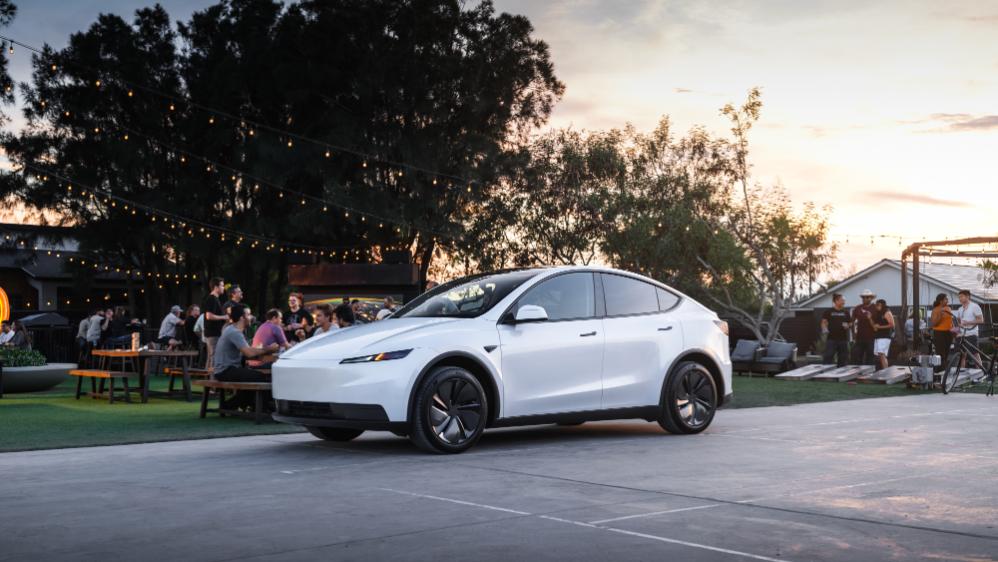
Tesla launched the Model Y Standard as an attempt to offer affordable electric vehicles to consumers now that the $7,500 EV tax credit is gone. We were able to spend four days with the car, and it was more than enough time to determine whether or not the car was worth the $9,000 discount compared to the Premium All-Wheel-Drive configuration, which is what I drive daily.
The Model Y Standard was stripped of some of the features that are present in the Premium trims of the Model Y: no glass roof, a sound system with roughly half the speakers, fewer acoustic-lined glass windows, less storage, and less functionality from an interior standpoint.
However, there are some real advantages to purchasing a Standard Model Y, and there are a handful of situations where this car would be well-suited.
Do I think it is worth the lower price? Well, I’ll get to that later in this article.
Initial Thoughts
In my first impressions review of the Model Y Standard, I talked about the face-value differences between my Model Y Premium and the new, more affordable trim. You will first notice the lack of storage between the front two seats, as the cupholder and additional storage bin sliding doors are void. You still get the cupholders, but they are exposed, which isn’t a huge deal, but it definitely takes away from the sleek look the Premium trim offers.
Additionally, the textile seats replace those of the vegan leather that is available in the upper-level trims. I mentioned previously that I could take or leave the vegan leather for the textile seats, as they are easy to clean, quick drying, and hide oils from your skin much better than leather does.
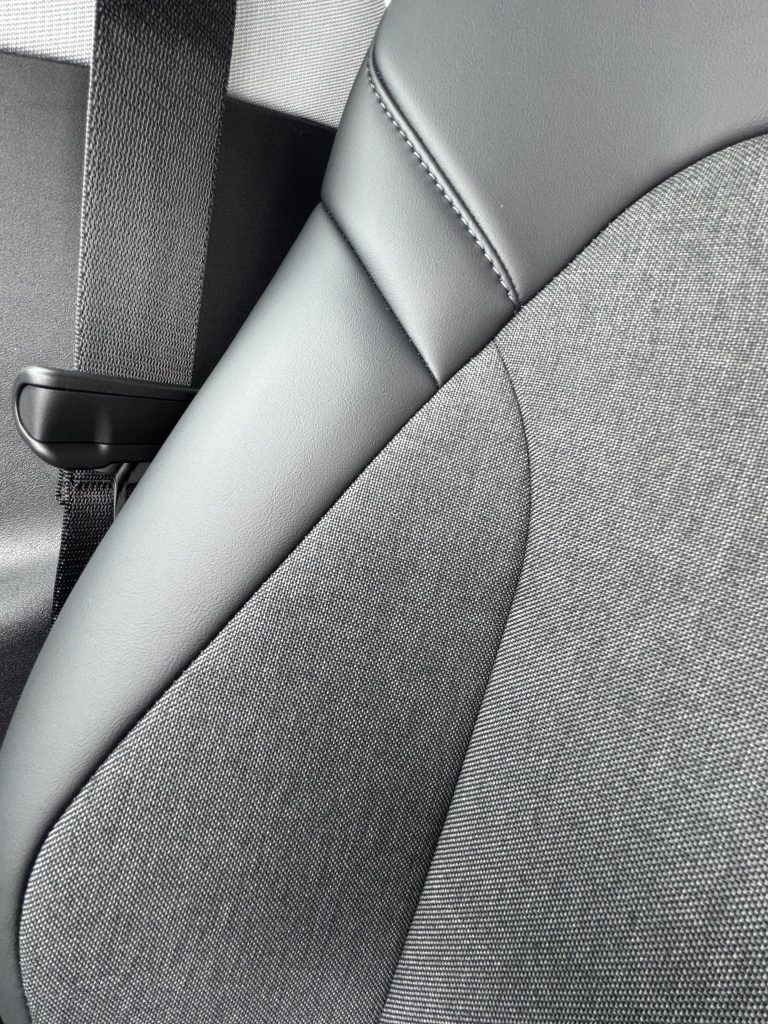
However, there comes one big sacrifice that I have been spoiled by, as the textile seats are not ventilated, so say goodbye to cooling your keister in the Summertime.
The lack of a glass roof is something many owners might not even notice. However, I have been spoiled by the glass roof in my car, and I look out of it every time I’m in my car. It is one of my favorite features, without a doubt. While it would not be a dealbreaker for me, it would be something I would miss terribly.
Things I Noticed After Several Days
Cabin Noise
One of the biggest things I noticed after the first two days in the Model Y Standard is that the cabin is much louder than the Premium. This is because Tesla did not acoustically line all of the glass in the Standard configuration, as it did in the Premium. The side windows are not treated, just the windshields. Therefore, you notice the noise level in the cabin is louder than in the Premium.
If you had not been driving in a Premium trim for a few months, you might not notice it. However, it is something that is a big sacrifice when moving to a different trim level, especially one that is less premium than what you might currently drive.
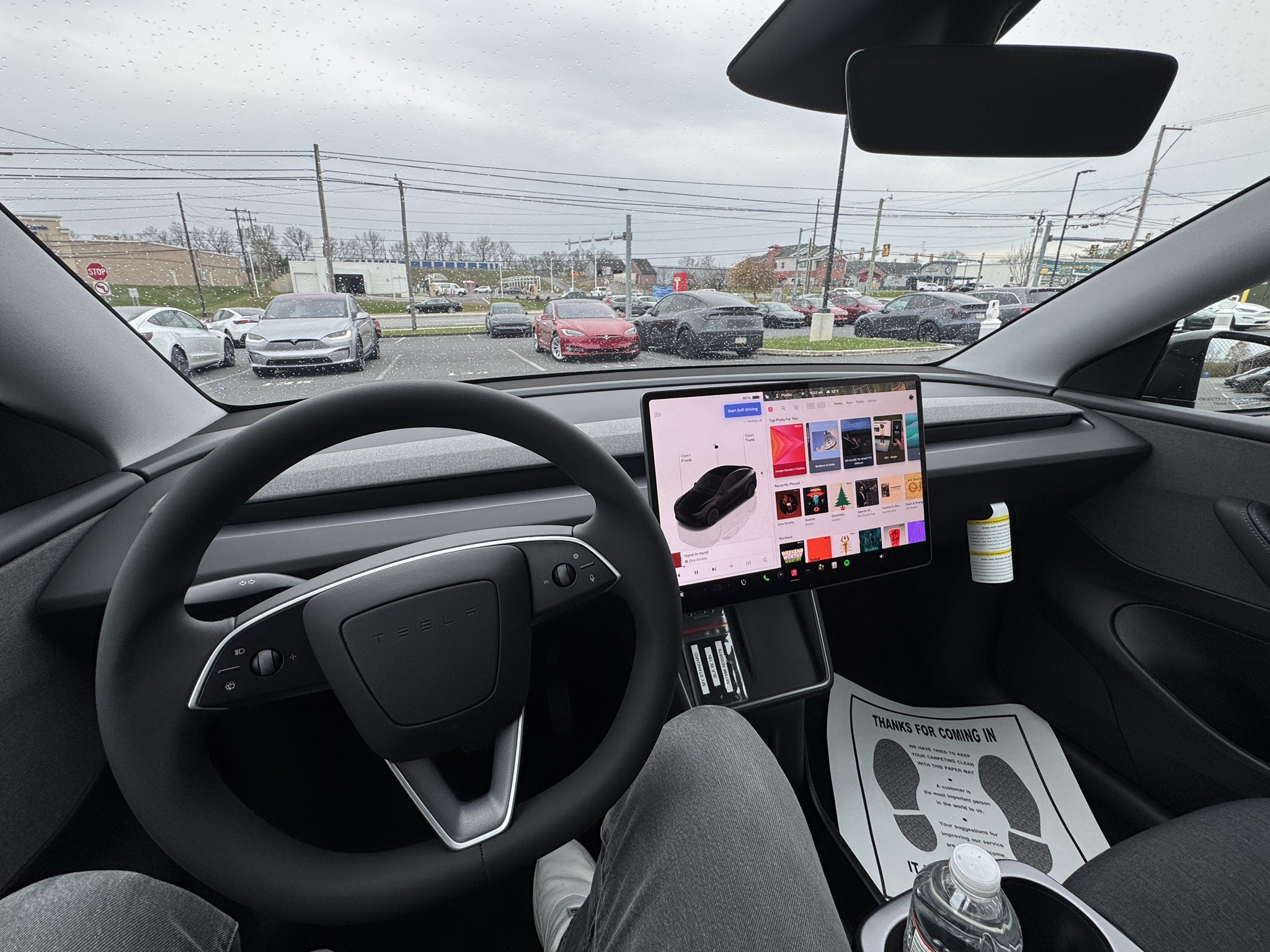
I have always been so shocked at how amazingly quiet the Premium trim’s cabin is; my Model Y is extremely peaceful, even when I’m sitting in bumper-to-bumper traffic, and people have modified mufflers and exhaust systems, tractor-trailers are going by, or crotchrockets are zipping by on the interstate.
This is a huge difference between the two cars, and it is something that is really hard to get used to. I know, first-world problems, right? But when you’re paying between $39,990 and $48,990 for a car, those little things truly do matter.
Stereo System Differences
Another thing I was very aware of was how weak the sound system is. I think if I had bought a Standard Model Y, I would have looked at having the speakers and subwoofers upgraded; I was almost disappointed in how much of a change it was between the two cars.
When I finally picked up my Model Y Premium on Friday (which had been detailed by the awesome team at Tesla Mechanicsburg), the first thing I did was crank up the volume and listen to some music. I really missed having a premium sound system.
Ride Quality
There are virtually no differences between the two cars in terms of ride quality. They are both extremely fun to drive, and the suspension in the Model Y Standard feels perhaps a little bit stiffer than the Premium. Regardless, I didn’t truly notice all that much of a change.
Driving this car around windy roads and tight turns was just as fun as my Model Y Premium. It was a blast to test out, and the slight change in feel was welcome. It’s always fun to drive new cars.
Performance
This is the first EV I’ve ever ridden in where I did not feel that awesome sensation of instant torque. It’s still a quick car, but it is missing that pep in its step that many of us have become accustomed to.
If you want to get someone’s true reaction to EV acceleration, let me just put it this way: This is not the car to do it in.
Some Little-Known Facts About the Model Y Standard
Most of us know that the Model Y Standard has a glass roof, but it is opaque, so even if you took out the headliner, you still would not see out of it. However, there is an interesting little tidbit from a Service perspective that does not make much sense.
If the Model Y glass roof cracks or is broken and needs to be replaced, Service is required to pull off the entire headliner and topside interior to access the glass. It cannot be replaced from the outside. In the Premium, because the glass is exposed, it is a much simpler process to replace the glass. This was an interesting thing I learned.
Additionally, the seat controls are only available on the center screen, which makes it difficult to adjust the seat if you are larger than the person who sat in the car previously. In order to adjust the seat, you’ll have to lean over the chair, access the controls from the screen, and adjust it manually before getting in.
Is the Tesla Model Y Standard Worth the Cheaper Price?
For an additional $9,000 to buy the Model Y Premium AWD, you would get a more capable powertrain, a quieter cabin, better performance, an upgraded interior, more storage, a better sound system, and more luxury features.
To me, the Standard is a car that seems extremely ideal for a teenager’s first vehicle (I got a $1,500 1998 VW Jetta K2 with 200,000 miles when I was 16), or a fleet vehicle. This would be the perfect car for salespeople to use: it does not have all the bells and whistles, it is efficient, and it is just what is needed to drive around to meetings.
For a personal car, it really depends on what you think you need. Admittedly, I’ve been spoiled by the Premium configuration, and personally, I wouldn’t go down to the Standard after owning a Premium trim.
News
Tesla’s new Holiday perk is timed perfectly to make FSD a household name
Tesla AI4 owners get FSD (Supervised) through Christmas, New Year’s Eve and well into the post-holiday travel season.
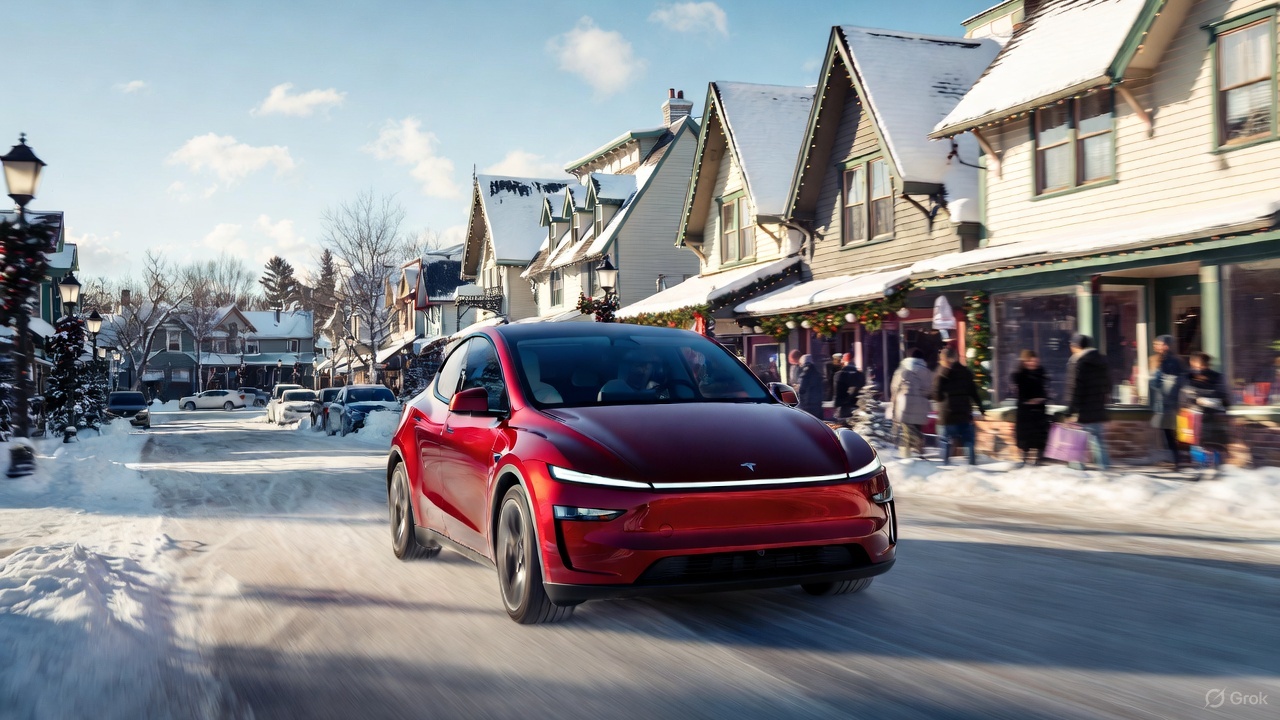
Tesla quietly rolled out a free Full Self-Driving (Supervised) trial for roughly 1.5 million HW4 owners in North America who never bought the package, and the timing could very well be genius.
As it turns out, the trial doesn’t end after 30 days. Instead, it expires January 8, 2026, meaning owners get FSD (Supervised) through Christmas, New Year’s Eve and well into the post-holiday travel season. This extended window positions the feature for maximum word-of-mouth exposure.
A clever holiday gift
Tesla watcher Sawyer Merritt first spotted the detail after multiple owners shared screenshots showing the trial expiring on January 8. He confirmed with affected users that none had active FSD subscriptions before the rollout. He also observed that Tesla never called the promotion a “30-day trial,” as the in-car message simply reads “You’re Getting FSD (Supervised) For the Holidays,” which technically runs until after the new year.
The roughly 40-day period covers peak family travel and gatherings, giving owners ample opportunity to showcase the latest FSD V14’s capabilities on highway trips, crowded parking lots and neighborhood drives. With relatives riding along, hands-off highway driving and automatic lane changes could become instant conversation starters.
Rave reviews for FSD V14 highlight demo potential
FSD has been receiving positive reviews from users as of late. Following the release of FSD v14.2.1, numerous owners praised the update for its smoothness and reliability. Tesla owner @LactoseLunatic called it a “huge leap forward from version 14.1.4,” praising extreme smoothness, snappy lane changes and assertive yet safe behavior that allows relaxed monitoring.
Another Tesla owner, @DevinOlsenn, drove 600 km without disengagements, noting his wife now defaults to FSD for daily use due to its refined feel. Sawyer Merritt also tested FSD V14.2.1 in snow on unplowed New Hampshire roads, and the system stayed extra cautious without hesitation. Longtime FSD tester Chuck Cook highlighted improved sign recognition in school zones, showing better dynamic awareness. These reports of fewer interventions and a more “sentient” drive could turn family passengers into advocates, fueling subscriptions come January.









